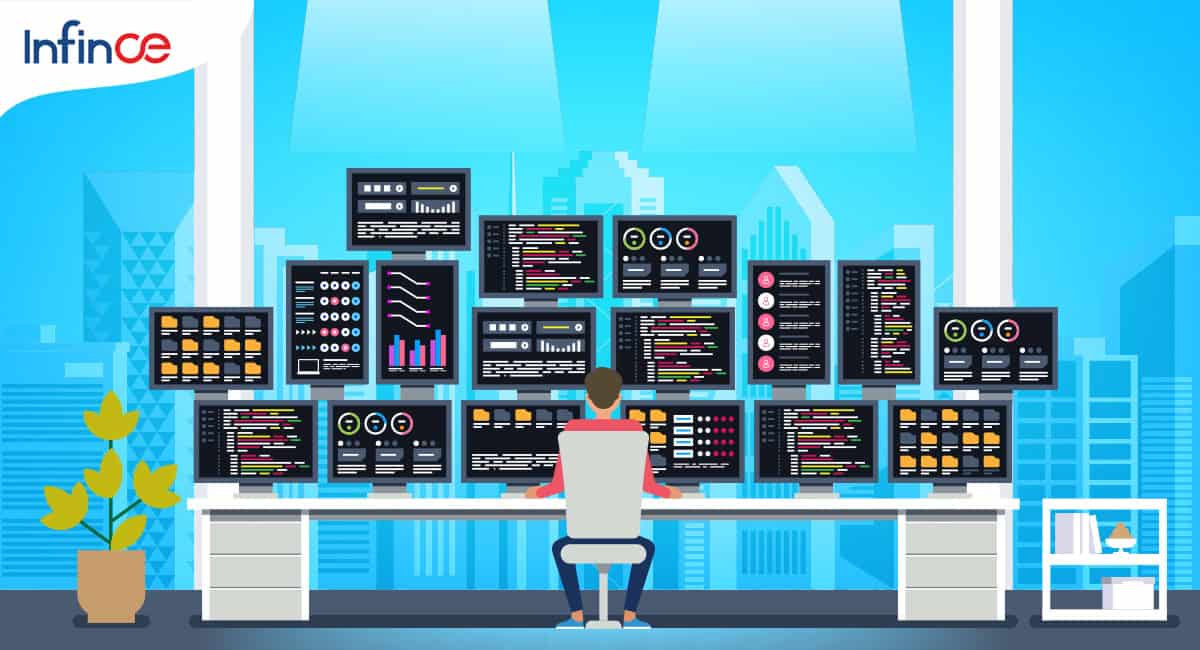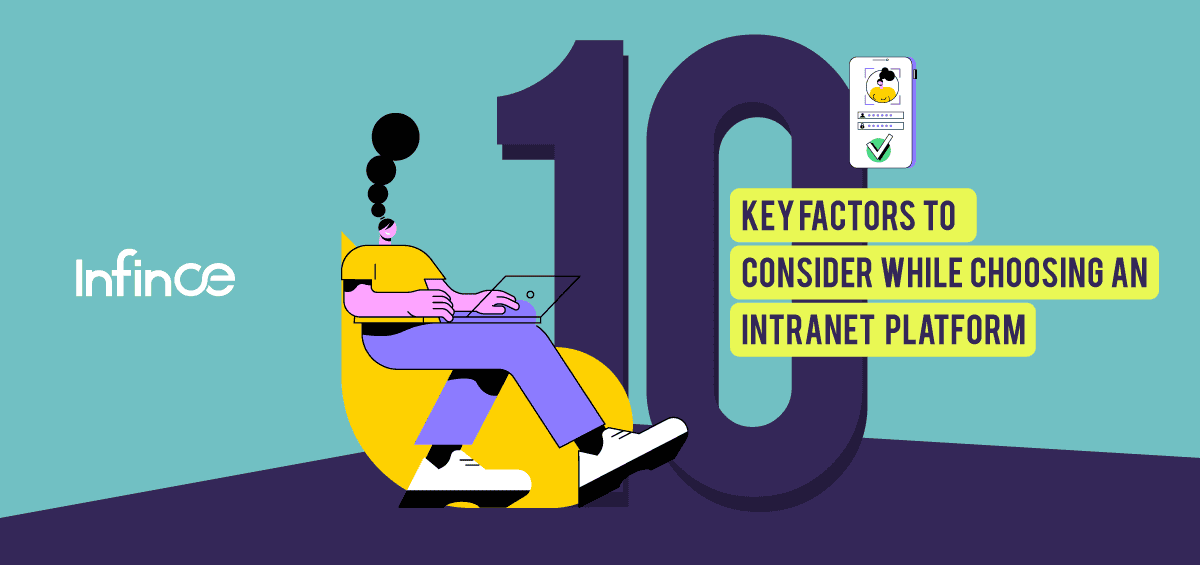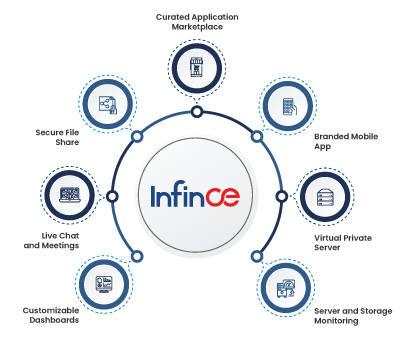The COVID19 pandemic redefined the way people worked on a global scale!
The McKinsey report “The Future of Work after Covid-19” says, “the pandemic accelerated existing trends in remote work, e-commerce, and automation with up to 25% more workers than previously estimated potentially needing to switch occupations”.
Remote work necessitates companies to increasingly adopt digital workplaces to let their employees seamlessly access data from anywhere to get their work done. But how can you define if a digital workplace is effective, safe, and focused on the well-being of the employees?
This article will take you through the top ways to monitor your digital workplace and keep it relevant!
Read more: How An Integrated Digital Workplace Solution Helps Mitigate Remote Work Hurdles
What Is A Digital Workplace And Why Do You Need A Digital Workplace Solution?
When your traditional or physical workplace turns digital, with everything you need for your work made available over the internet, it’s called a digital workplace. Digital workplaces are the smartest way to operate. But often digital workplaces give rise to security threats, clogged servers, misplaced data, and more such technology errors.
That’s when you need an apt digital solution, which eliminates all risks, and streamlines work digitally.
A digital workplace solution is a single platform that seamlessly integrates all the technologies required for getting work done, which include multiple apps, intranets, and portals. It consists of an all-encompassing, holistic set of multiple tools and environments needed for work made available on a single platform in an easily usable, logical, and productive manner.
It is essentially a connected environment that provides employees access to all the data they need, independent of devices and geographical locations. Digitization of workplaces has enabled employees at all levels to communicate and collaborate in newer and more effective ways to form more productive relationships, thus serving to break down the silos at work and create employee experiences rooted in efficiency and growth.
Remote work continues to be the preferred way of work for most employees post lockdown!
The McKinsey study “What’s next for remote work: An analysis of 2,000 tasks, 800 jobs, and nine countries” says “executives have indicated in surveys that hybrid models of remote work for some employees are here to stay. The virus has broken through cultural and technological barriers that prevented remote work in the past, setting in motion a structural shift in where work takes place, at least for some people”.
Hybrid work allows employees to switch between work-from-home and the office depending on the demands their roles make on them. Remote work is here to stay, be it full-time or hybrid, a fact that has contributed heavily toward the increased adoption of digital workplace solutions.
Digitization of business processes has caused companies to focus on leveraging technologies to increase employee efficiencies. Digital workplace solutions serve to streamline the internal operations of your business by segregating and analyzing vast volumes of data, and making it available at your employees’ fingertips, thus enabling them to work smarter and faster.
Now, What’s Digital Wellbeing?
Digital wellbeing refers to the practice of leveraging data and technology to ensure the physical and mental wellbeing of your employees. Digital workplace solutions leverage technology and streamline data to help you attract and retain talent, increase productivity, and enhance employee experiences. Futuristic companies have come to realize that they should raise the levels of wellbeing of their digital employees to help the latter thrive in a stressful working environment.
Read more: Driving Employee Engagement In Today’s Changing Work Culture!
A Few Strategies To Ensure The Wellbeing Of Digital Workplaces:
1. Limit screen time
Digital workplace wellbeing focuses on reducing and optimizing screen time!
A sample survey of 4000 respondents held in the UK found that 75% of the employees felt that reduced screen time would be good for their mental health.
Streamlining the data, be it messages or emails, would save your employees from being bombarded with unnecessary data and reduce their screen time and stress levels. You need the service of a smart digital workplace solution to ensure this.
A good digital workplace solution will make sure that the right data reaches the right people to avoid information overload. Effective collaboration apps can facilitate seamless communication and easy file sharing, thus serving to reduce their screen time. Employees need to access only the right data as and when they need it.
2. The personnel department must focus on human relations than human resources
Companies must cease to look at their employees as means to achieve economic success and consider them as ‘whole men and women’ rather than bundles of skills.
Employee satisfaction and experience should be of utmost importance and their welfare, a primary concern to the leadership. Building employee welfare into the body of corporate policies would serve to create a sense of belongingness in the minds of the employees. The principle of the human relations approach focuses on making organizational members feel useful and vital to the company.
Building custom dashboards on digital workplace platforms will let you keep tabs on your projects’ progress and employee performances, thus enabling you to appreciate and reward good work. Sharing articles of motivation, events, quick games, and surveys through customized dashboards can help keep employees engaged and productive. Good employee experiences create a sense of belongingness and a feeling of being vital, leading to reduced attrition levels.
3. Create an environment of inclusion
Some employees might be wary of new technologies while certain others – like siloed teams – might see collaboration tools as a threat. It is imperative to ensure governance and compliance in place to train your employees at all levels in new technologies before deploying digital platforms. When diverse teams work together from different geographies in a digital working environment, it is the sense of inclusion that helps boost employee engagement.
A digital workplace can be identified as an effective one only when it can be utilized by all. Thus, it needs to be simple and user-friendly, so that all employees can easily adapt to the new tools and technology.
Read more: The Definitive Guide to Perfect Digital Workplace Solution
In Conclusion!
As mentioned above, digital workplaces are the smartest way forward for businesses. But it has its own drawbacks. However, these few glitches can easily be eliminated with the adoption of the right digital workplace solution.
InfinCE makes a smart digital workplace partner that addresses the vital factors of engagement, diversity, inclusion, and belongingness among employees to help them meet the targets set much faster, in an employee-friendly environment designed to create great employee experiences.
With InfinCE, your employees can:
- Stay connected
- Work smart
- Make quick decisions
- Reduce work stress
- Maintain work-life balance well
- Stay engaged, motivated, and feel valued.
Know more about how InfinCE can drive employee wellbeing as well as improve efficiency in your organization.





